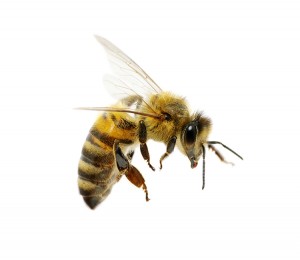Ig Nobel Prizes Celebrate Improbable Science
Friday, September 18th, 2015September 18, 2015

One winner of an Ig Nobel prize for 2015 allowed bees to sting him on different parts of his body to determine where bee stings are most painful for humans. Credit: © Shutterstock
A strange crowd was in attendance last night as the 25th annual Ig Nobel prizes were awarded in a star-studded gala ceremony at Harvard University in Cambridge, Massachusetts. Unlike the more well-known Nobel Prize, which in science is given for the most important discoveries or inventions in the fields of physics, chemistry, and physiology or medicine, the Ig Nobel prizes honor scientific research projects that may make people laugh, but also makes them think. Ig Nobel is a play on words—the word ignoble means disgraceful or of a low class. Since 1991, the Ig Nobel ceremony has awarded 10 prizes each year to scientists whose unusual research helps spur people’s interest in science, medicine, and technology. Several of the awards last night were presented to winners by Nobel laureates. The award ceremony has many traditions. The audience, for example, throws paper airplanes at the stage during the ceremony.
The Ig Nobel prizes originated with the editors and publishers of the journal Annals of Improbable Research. Today, the award ceremony is co-sponsored by the Harvard-Radcliffe Society of Physics Students and the Harvard-Radcliffe Science Fiction Association. Ig Nobel prizes are awarded for original research in biology, chemistry, physics, mathematics, economics, medicine, diagnostic medicine, physiology and entomology, literature, and management.
The winners included:
1. The chemistry prize was awarded to team from Australia who determined how to chemically (partially) unboil an egg.
2. The physics prize was awarded to a joint United States and Taiwan team who determined that nearly all mammals empty their bladder in about 21 seconds.
3. The literature prize was awarded for research that found the term “huh” exists in nearly all human languages.
4. The medicine prize went to a group that studied the health benefits of kissing.
5. In mathematics, a group was awarded the prize for using mathematical techniques to determine if it was possible, as claimed, for Moulay Ismael, the Emperor of Morocco from 1697 to 1727, to have fathered 888 children.
6. The physiology and entomology award went to a U.S. and Canadian team where one member allowed honey bees to sting him repeatedly on 25 different locations of his body to determine which areas receive the most painful stings.
While many of the prize-winning topics sound funny, they actually demonstrate the imaginative use the scientific method to answer questions. Such research is not likely to be recognized by more prestigious scientific honors, but the research is still valuable or, sometimes just interesting.








